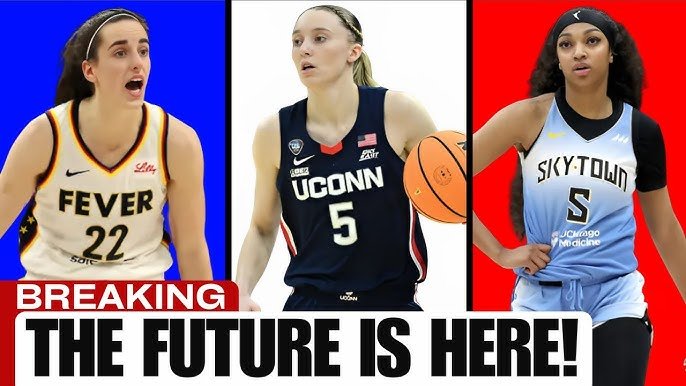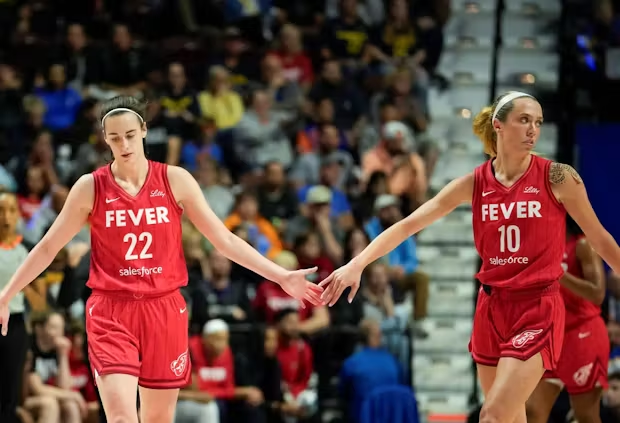The Women’s National Basketball Association (WNBA) has long been a pioneer in advancing professional women’s sports in the United States. But in 2025, the league is set to achieve something even greater: a truly global identity. With strategic expansion moves, historic international events, and a rapidly growing global fanbase, 2025 could very well be the biggest and most transformative year in the WNBA’s history.
Expansion: A New Era for the League
In 2025, the WNBA expands for the first time in nearly two decades with the introduction of the Golden State Valkyries. This new franchise, based in San Francisco, represents more than just another team; it symbolizes the league’s broader vision of reaching new markets and tapping into regions where basketball culture is thriving.
The Valkyries will bring fresh energy, a new fan base, and the opportunity to build a team from the ground up. With a vibrant basketball scene in the Bay Area and the support of a city known for progressive values and diverse communities, the Valkyries are expected to be a major asset to the league—both on and off the court.
While the addition of Golden State in 2025 is a big move, the league isn’t stopping there. Plans are already in motion for the Toronto Tempo to join in 2026, which will mark the first time the WNBA has expanded beyond the borders of the United States. The decision to launch a team in Canada reflects the league’s global ambitions and acknowledges the growing passion for women’s basketball in North America’s second-largest country.
International Games: Taking the WNBA Global
Another milestone for the WNBA in 2025 is the league’s first-ever regular-season game to be played outside the U.S. In August, the Atlanta Dream will face off against the Seattle Storm in Vancouver, Canada. This event is more than just a game—it’s a statement.
By hosting a regular-season matchup internationally, the WNBA is signaling its intention to be a global league. This game offers Canadian fans a rare opportunity to experience the excitement of WNBA basketball in person and could set the stage for similar events in Europe, Asia, and beyond.
International games like this serve multiple purposes. Not only do they expand the league’s visibility, but they also foster stronger connections between fans and players from different cultures. It’s a chance to grow the sport in regions where professional women’s basketball is still developing—and inspire young girls around the world to dream big.

A Surge of International Talent
One of the most exciting developments in recent years has been the rise of international talent in the WNBA. In 2025, this trend continues with more global players making a significant impact than ever before.
One of the most talked-about additions this season is French center Dominique Malonga. Drafted second overall by the Seattle Storm, Malonga is already turning heads with her elite skills, powerful presence in the paint, and strong basketball IQ. As an international player making a name for herself in a U.S.-based league, Malonga exemplifies the WNBA’s growing global reach.
Teams across the league are increasingly looking beyond U.S. borders to scout top-tier talent. The Phoenix Mercury, for example, boast a roster with six international players, reflecting a strategic shift in recruitment. Countries like Australia, France, Spain, Nigeria, and Canada are becoming pipelines of elite women’s basketball talent, enriching the quality of play in the WNBA and making the league more competitive than ever.
This international infusion not only improves on-court performance but also helps the league tap into international markets. Fans in Europe, Africa, and Asia are tuning in to watch their homegrown stars play on one of the biggest stages in sports.
Cultural Influence and Global Fan Engagement
The WNBA’s cultural impact is also becoming more global. Social media has played a massive role in connecting fans around the world to players, games, and behind-the-scenes content. Players like Breanna Stewart, A’ja Wilson, and Sabrina Ionescu now enjoy global recognition, with fan followings that span continents.
Online platforms like YouTube, TikTok, and Instagram have allowed the WNBA to bypass traditional media barriers and connect directly with international audiences. Whether it’s game highlights, lifestyle vlogs, or advocacy work, players are using their platforms to grow the game and inspire others globally.
This increase in digital engagement is evident in the numbers. The WNBA has experienced a massive spike in international viewership and online searches over the past year. As more games are streamed globally and social content becomes more accessible, the league is building a worldwide community of fans who are passionate about women’s basketball.
Economic Growth in Women’s Sports
The WNBA’s global growth is happening alongside a financial boom in women’s sports more broadly. In 2025, women’s sports are projected to generate over $2.35 billion globally, a 25% increase from the previous year. This surge is being driven by a combination of media deals, increased sponsorship interest, and growing fan engagement.
For the WNBA, this economic momentum presents opportunities for new partnerships, merchandising growth, and expanded media rights. Major brands are beginning to recognize the commercial value of aligning with women’s sports, particularly as audiences demand more equitable coverage and representation.
With more funding, the league can invest in player development, international outreach, and marketing campaigns that help elevate the WNBA brand to new heights. This influx of resources is essential to ensuring sustainable growth and global relevance in a competitive sports landscape.
Strategic Leadership and Vision
Much of the WNBA’s success in recent years can be attributed to its forward-thinking leadership. Commissioner Cathy Engelbert has played a crucial role in charting a course for long-term growth, prioritizing inclusivity, innovation, and international expansion.
Under her leadership, the WNBA has embraced a more aggressive marketing strategy, secured new media partnerships, and launched initiatives aimed at improving player health, compensation, and visibility. The league has also remained at the forefront of social justice advocacy, cementing its place not just as a sports organization, but as a cultural institution.
This blend of business acumen and social awareness positions the WNBA uniquely among global sports leagues. It’s not just about basketball—it’s about representation, empowerment, and creating pathways for future generations of athletes, both in the U.S. and around the world.

The Future: Beyond 2025
What happens after 2025? If current trends continue, the WNBA could become one of the most globally recognized sports leagues by the end of the decade. With potential future teams in cities like London, Mexico City, or Tokyo, the WNBA’s footprint could expand rapidly.
There’s also the potential for global preseason tournaments, international all-star exhibitions, and deeper partnerships with basketball federations around the world. As the league continues to embrace its global identity, it has the chance to build something truly revolutionary—not just in sports, but in the world of global entertainment.
Conclusion
In 2025, the WNBA is not just growing—it’s evolving. With the addition of new teams, historic international games, and an influx of global talent, the league is redefining what it means to be a women’s sports organization in the 21st century.
From San Francisco to Toronto, from Seattle to Paris, the WNBA is becoming a bridge that connects cultures, empowers women, and inspires future generations. As we look ahead, one thing is clear: the world is watching, and the WNBA is ready for the spotlight
For more click here –Jake Paul and Conor McGregor: Combat Sports Icons Collid






